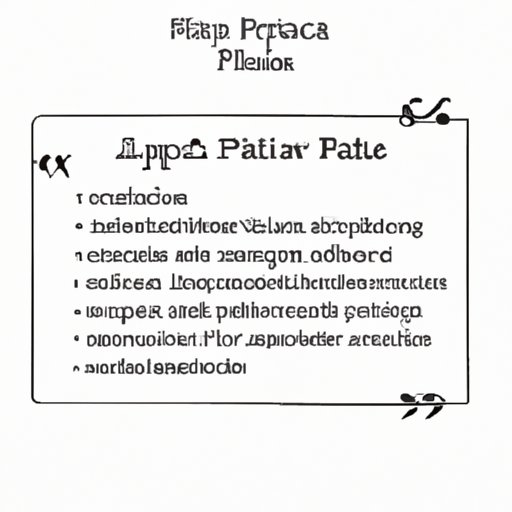
I. Introduction
When it comes to academic writing, proper citations are essential for demonstrating credibility and avoiding plagiarism. The American Psychological Association (APA) is one of the most commonly used citation styles in social science and behavioral science fields. APA in-text citations provide brief references within the text itself that help readers locate sources easily within the reference list. The purpose of this article is to guide you through the process of creating accurate APA in-text citations. We will provide examples and tips to help you master this important skill.
II. Step-by-Step Guide
The basic components of an APA in-text citation include the author’s last name, the year of publication, and the page number, all enclosed in parentheses. For example: (Smith, 2010, p. 20).
When citing different types of sources, you will need to use different formats. Here are some examples:
- Books: (Smith, 2010, p. 20)
- Journal articles: (Smith, 2010)
- Webpages with authors: (Smith, 2010, para. 5)
- Webpages without authors: (“Title of webpage,” 2010, para. 5)
When citing sources with multiple authors, include all authors’ last names in the citation. For example: (Smith, Johnson, & Jones, 2014). If the source has more than six authors, include the first author’s last name followed by “et al.” (Smith et al., 2014).
If a source does not have a publication date available, use the abbreviation “n.d.” in parentheses after the author’s name and before the title of the source. For example: (Smith, n.d., p. 20).
III. Common Mistakes to Avoid
One common mistake is inaccurate placement of commas within the citation, which can alter the meaning of the reference. Another common mistake is including the full citation within the sentence, rather than using the proper format of brief parenthetical references. These mistakes can impact the accuracy and credibility of the citation. It’s important to proofread and ensure that you are following APA format guidelines correctly.
Solutions to these mistakes include using online citation generators and proofreading carefully to ensure that the citation contains accurate and complete information in the proper format.
IV. Real-Life Examples
Let’s look at some examples of how to create accurate APA in-text citations in real-life scenarios:
- Scenario: You are citing a book with one author.
- In-text citation: (Smith, 2010, p. 20)
- Scenario: You are citing a journal article with two authors.
- In-text citation: (Smith & Johnson, 2014)
- Scenario: You are citing a webpage without an author.
- In-text citation: (“Title of webpage,” 2010, para. 5)
These examples show the different formats used for various types of sources.
V. Frequently Asked Questions
Here are some frequently asked questions about creating APA in-text citations:
- Q: When should I use page numbers in a citation?
- A: Use page numbers when citing direct quotes or paraphrased information from a specific page or set of pages in a source.
- Q: How do I cite a source with multiple authors?
- A: Include all authors’ last names in the citation, up to six authors, separated by commas. For sources with more than six authors, include the first author’s last name followed by “et al.”
- Q: How do I cite a webpage if there is no date available?
- A: Use the abbreviation “n.d.” in parentheses after the author’s name and before the title of the source.
VI. Comparing APA Style with Other Citation Styles
While APA is a widely used style, there are other notable citation styles such as Modern Language Association (MLA) and Chicago. APA is unique in its emphasis on the author and date, while MLA emphasizes the author and page number. Chicago uses footnotes and endnotes, rather than in-text citations. Understanding the key differences between these styles can help you choose the best style for your writing projects.
VII. Conclusion
Avoiding plagiarism and properly citing sources is an important part of academic writing. APA in-text citations can be tricky, but with practice and attention to detail, you can master this skill. Remember to proofread and double-check your citations for accuracy. By following the step-by-step guidelines, avoiding common mistakes, and referring to real-life examples, you can create accurate APA in-text citations with ease.





